
The new version of the popular cooking bento box boasts of cooking other things…but does it really work?
Japanese company Thanko has been making waves in the bento market with their cutting-edge, super convenient, portable, bento-sized rice cooker. Of course, when it came out we ordered one right away, and found that it met all of our expectations. Now there’s a double-decker version, which claims to be able to heat and cook food on the top tier…so of course we had to try that one out, too.
The new upgraded version is appropriately called the Two-Level Super High-Speed One-Person Bento Box Rice Cooker, and it retails for 7,980 yen (US$77.21), just 1,000 yen more than the original single-tier box.
The basic function of the two-tier is the same is the single-tier; it’s a portable rice cooker. The main difference between them is that the two-tier is, of course, bigger, with its second level, which is made up of an inner lid and a tray, allowing you to steam whatever you put inside.
It claims that it can cook your food in just 15 minutes…but we were inclined to believe that is the minimum estimation. The packaging does say that it could take longer depending on the type of food you’re trying to cook, especially if it was frozen when it went in.
Well, no choice but to try it to find out, right? Without further ado, we started with the most basic of experiments, a suggested use by the manufacturers: cooking rice…
…and frozen gyoza, or Japanese dumplings.
These frozen gyoza are in fact recommended to be seared in a frying pan…They don’t have any microwaving instructions or steaming recommendations, so we were curious to see how they would come out.
We put a scoop full of rice in the rice cooking compartment, neatly lined the frozen gyoza in the top compartment, and switched it on.
And then we waited…and waited…and waited some more, until finally the little “cooking” light switched from red to green, indicating that it was done.
In the end, it took 33 minutes for the light to change, which made it no surprise to us that the manual warns that frozen foods will take longer than the advertised 15 minutes. The challenge is that, since there aren’t any guidelines about how long frozen foods will take, the only way to find out is to experiment.
Let’s start with the results of this experiment. First off: the rice. In opening the box and lifting the top tier, we saw a little bit of the rice peeking through the holes of the lid. It worried us a little, because it actually looked a bit mushy.
But upon lifting the lid and inspecting, it turned out to be perfectly fluffy, delicious-looking rice. It was only the little circles at the surface that were a little watery; the rest of the rice was quite nicely done.
And now, the main dish. The gyoza were…
Properly cooked at least. Of course, since they’d been steamed and not fried, they didn’t have the traditional crispiness of Japanese gyoza, but that’s to be expected. Soft gyoza is still gyoza, and these ended up being pretty tasty regardless.
This speaks to the success of the two-level bento rice cooker. But! These results all fit into the realm of our expectations. It was time to give the Two-Level Super High-Speed One-Person Bento Box Rice Cooker a real challenge, so we went to the supermarket and picked up the item from the frozen food isle that requires the most amount of time to cook: the cabbage roll.
The instructions on the cabbage rolls’ packaging recommends boiling them, and claims that it takes 14 minutes to cook four of them from frozen. We weren’t sure how that would translate to being steamed in the rice cooker, but we were about to find out.
Of course, we couldn’t let the rice cooker get away with a simple challenge like that, so we added a bit of raw meat to the mix as well. Would steam properly cook this rump steak? Only time would tell.
We also added some leftover gyoza from the previous experiment, for good measure. Altogether, there were two frozen cabbage rolls, two frozen gyoza, and a slab of raw steak. By no means the traditional kind of bento you’d find in Japan, but a mouthwatering meal nonetheless. That is, if cooked properly.
By the way, like last time, we once again added a full scoop of rice to the cooker portion. After all, no meal is complete without rice (and the whole project wouldn’t work without the rice cooking to steam the upper tier).
We sealed it all up and switched it on, but it was a long while before the light turned green–52 minutes, to be exact. As it turns out, this was a pretty hard challenge for our little portable cooker.
Once the light was green, we opened it up to see how things looked, and, after being blasted with a wave of hot, steamy air, were greeted with this surprising view:
While the ingredients up top were supposed to be cooked via steam, they were actually swimming in a pool of water. The ice and water content from the cabbage rolls and gyoza most likely melted and collected in the container. But never fear! They may have ended up more boiled than steamed, but at least there was no doubt that they had all been thoroughly defrosted and heated. The cabbage rolls, for example, were nicely soft, plump, and juicy.
Surprisingly, the steak was also nicely cooked. As if it had been slow cooked, it was super soft and tender, and fell apart easily. Even though it took a little bit of time, it was far less time than slow-roasting or using a slow-cooker. Nice job, portable rice cooker!
The gyoza were a little bit on the watery, fragile side, more like wantons than Japanese-style dumplings. But they were also delicious, so no complaints here!
Later, we also tried leaving out the rice and just putting water in the cooking container, and the steak and cabbage rolls in the top also cooked super nicely, so even if you don’t eat rice, you can make use of this cooker as a steamer instead. The only concern is that it might not have a proper sensor for that. We got impatient and opened the lid before the light turned green, and both ingredients were ready to eat, even though the machine didn’t say they were.
We were able to turn it off and eat our lunch then, and everything was fine, but that made us wonder if all of our ingredients were cooked way before the machine said they were, even when we cooked with rice.
We decided that, in the end, if you kind of ignore the recommendations in the manual, this little cooking device could have a lot of really useful functions. We gave it a few reckless trials, but it lived up to them pretty well. We’d say that the Two-Level Super High-Speed One-Person Bento Box Rice Cooker has a lot of potential in the kitchen and even in the office.
The only warning we’d like to leave you with is that the cooking times will vary pretty greatly, so if you want your food to be finished cooking in time for your lunch break, then you might have to do some experimenting beforehand to know exactly when to start. That and, based on our experience with the gyoza getting soggy, we’d recommend taking into account the potential liquids that might be released by the foods you put in the top tier. It might be a small issue for some people, but it’s something to keep in mind nonetheless!
But all in all, this is a great little device to have on hand. If you’re a gamer preparing for a marathon stint and you want don’t to leave your desk (or couch), this is something you can prepare ahead of time and just plug in and turn on when you’re ready. This could also work if you’re always busy at work and can’t leave your desk to make or buy lunch. The possibilities and uses are endless, so the Two-Level Super High-Speed One-Person Bento Box Rice Cooker gets our SoraNews24 seal of approval, alongside the equally impressive Twin Chef two-in-one curry rice cooker we tried earlier this year!
Images © SoraNews24
● Want to hear about SoraNews24’s latest articles as soon as they’re published? Follow us on Facebook and Twitter!
[ Read in Japanese ]

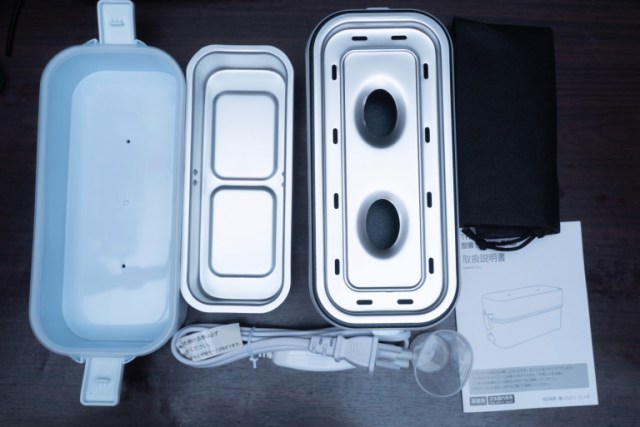
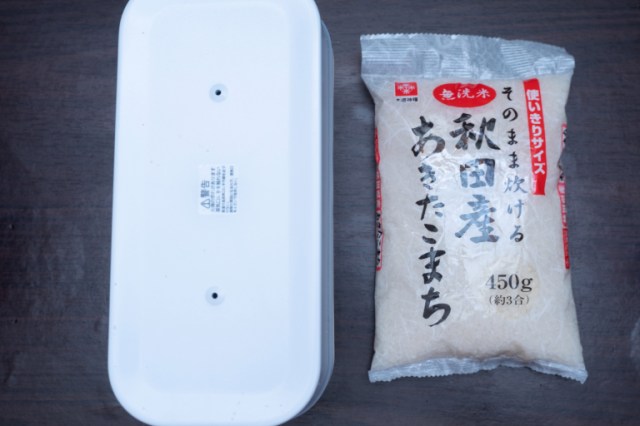
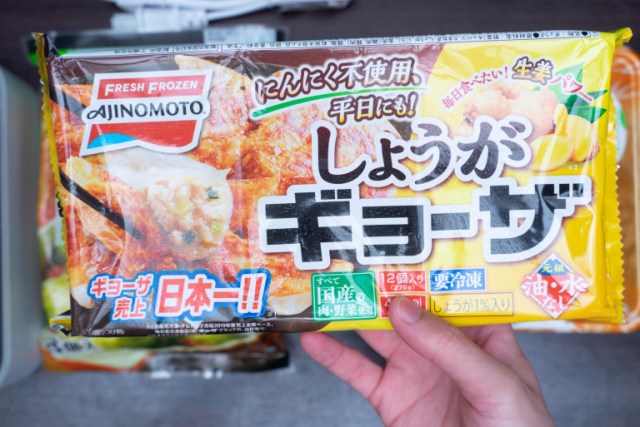
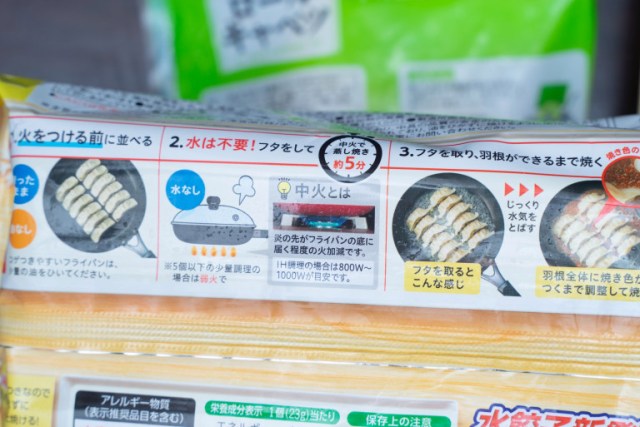
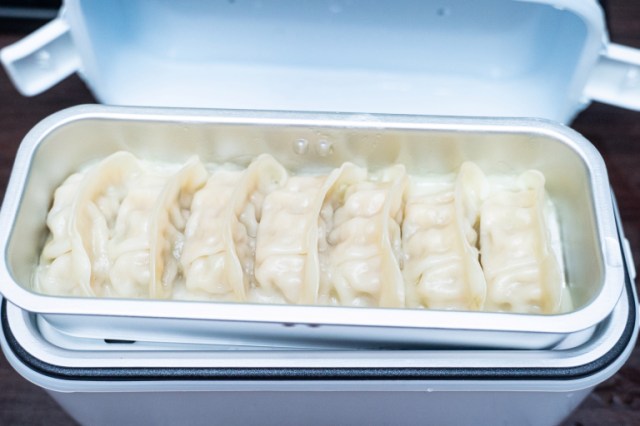
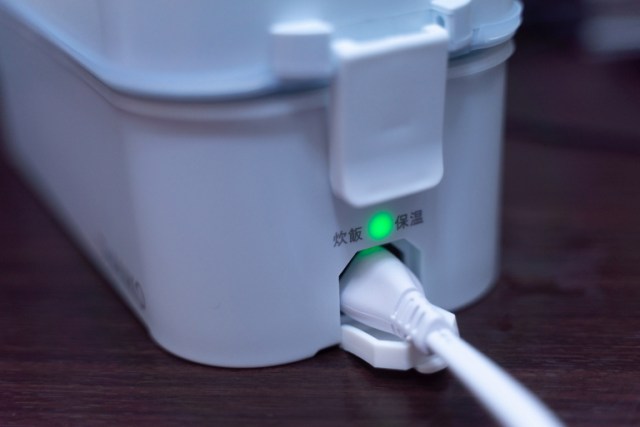
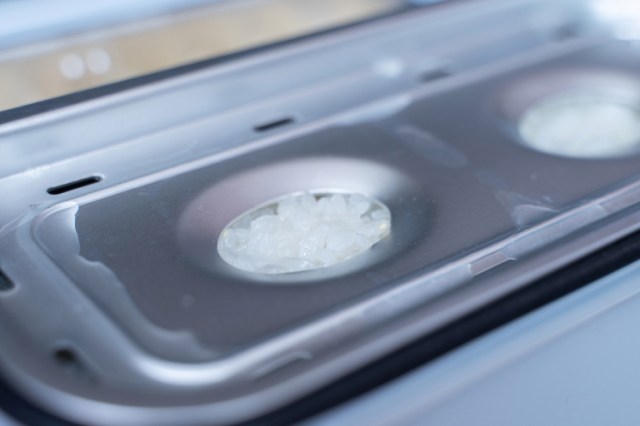

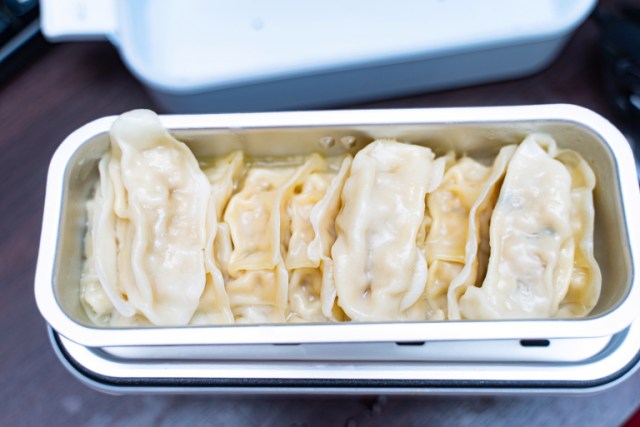
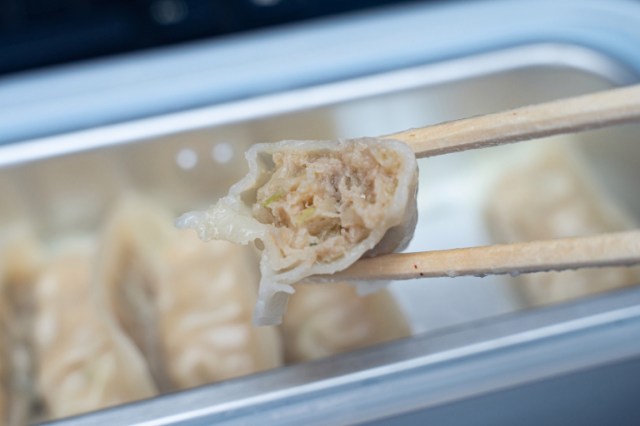
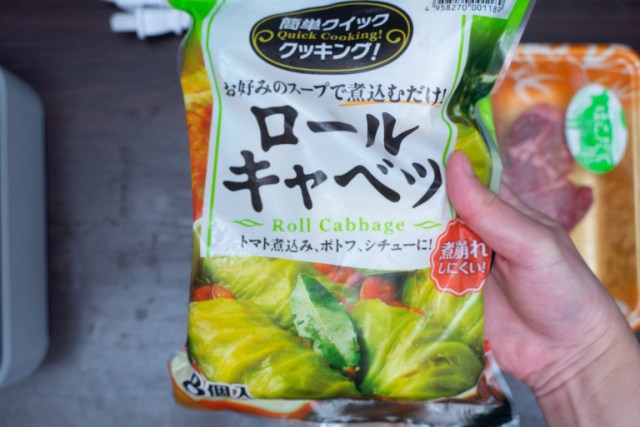
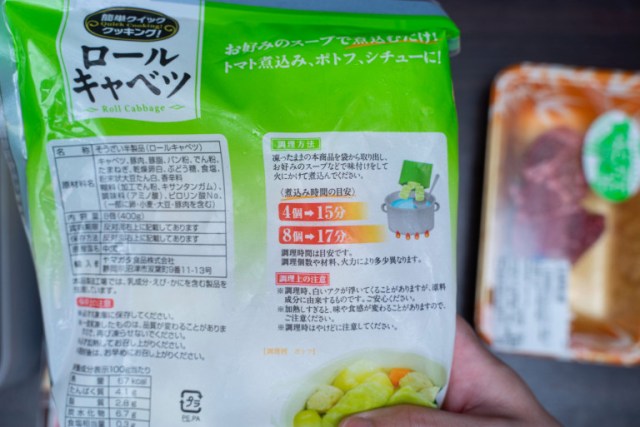
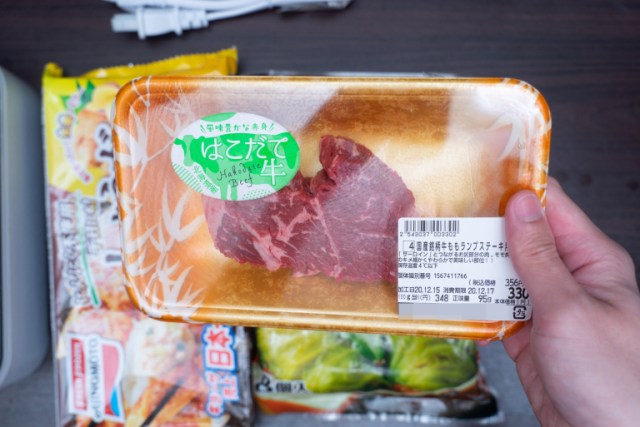
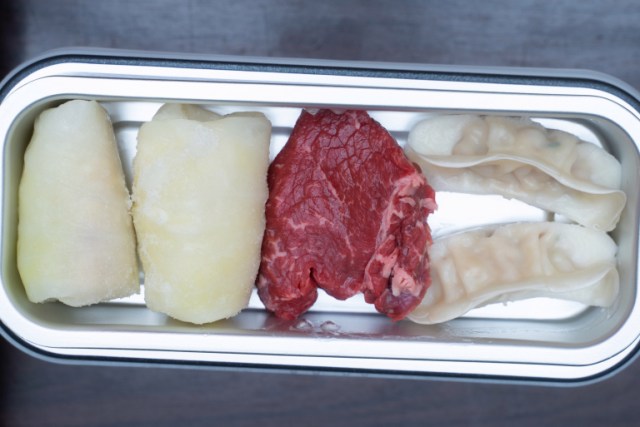
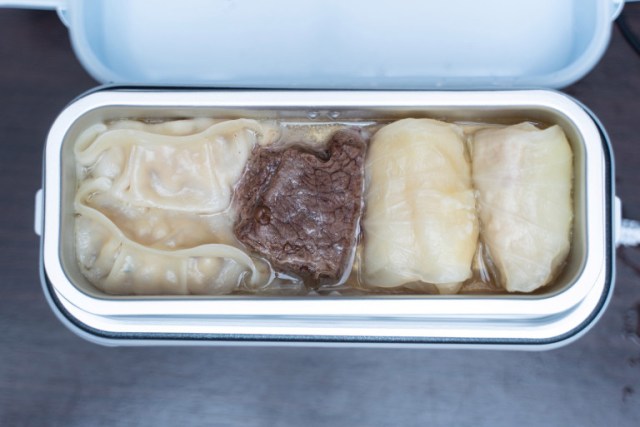
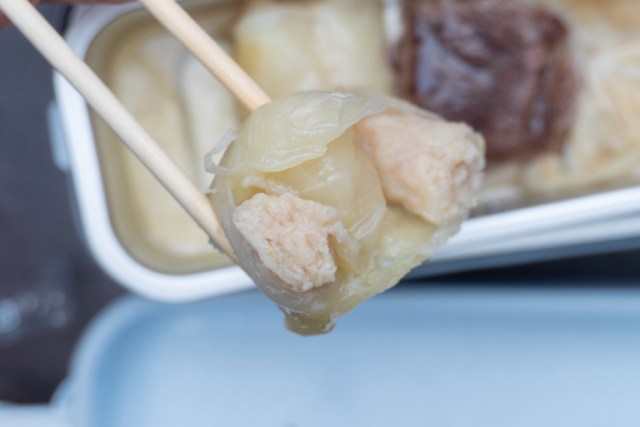

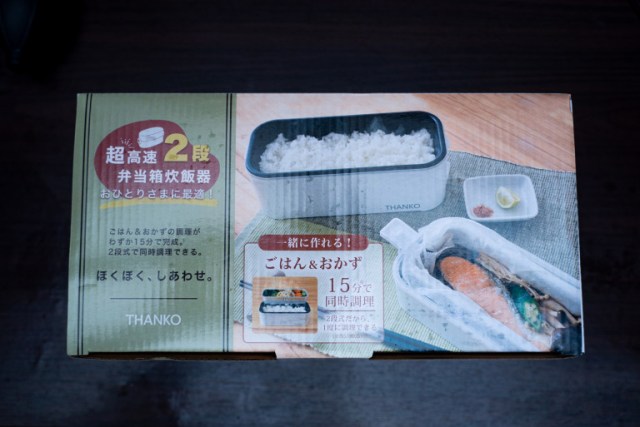
 Japan’s one-person bento box-sized rice cooker gets double-decker version that cooks side dishes too
Japan’s one-person bento box-sized rice cooker gets double-decker version that cooks side dishes too Japan’s one-person bento box-sized rice cooker can give you freshly cooked rice at the office
Japan’s one-person bento box-sized rice cooker can give you freshly cooked rice at the office Japan has an awesome one-person bento box rice cooker, and here’s what we made with ours
Japan has an awesome one-person bento box rice cooker, and here’s what we made with ours New Japanese bowl-shaped donburi rice cooker cooks rice and toppings at the same time
New Japanese bowl-shaped donburi rice cooker cooks rice and toppings at the same time Japan goes beyond rice cookers with new curry rice cooker, the kitchen gadget we need right now
Japan goes beyond rice cookers with new curry rice cooker, the kitchen gadget we need right now Ramen restaurant’s English menu prices are nearly double its Japanese ones, denies discriminating
Ramen restaurant’s English menu prices are nearly double its Japanese ones, denies discriminating Here’s what our bachelor writers ate over the New Year’s holiday in Japan
Here’s what our bachelor writers ate over the New Year’s holiday in Japan Things get heavy with the Gold Lucky Bag from Village Vanguard
Things get heavy with the Gold Lucky Bag from Village Vanguard Top Japanese cosplayer Enako returns to Comiket after 6 years, creates mayhem with admirers
Top Japanese cosplayer Enako returns to Comiket after 6 years, creates mayhem with admirers Japanese beef bowl chain Sukiya’s 2026 Smile Box lucky bag basically pays for itself
Japanese beef bowl chain Sukiya’s 2026 Smile Box lucky bag basically pays for itself Tokyo fish market breaks New Year auction record as single fish sells for over 500 million yen【Vid】
Tokyo fish market breaks New Year auction record as single fish sells for over 500 million yen【Vid】 What makes a good boss in Japan? Workers sound off in survey
What makes a good boss in Japan? Workers sound off in survey Japanese avoiding domestic travel as foreign tourists increase, possibly creating vicious cycle
Japanese avoiding domestic travel as foreign tourists increase, possibly creating vicious cycle Never work with animals: Outtakes from Japanese delivery company’s adorable black cat ad【Video】
Never work with animals: Outtakes from Japanese delivery company’s adorable black cat ad【Video】 Attack on Titan sukajan jackets bring elegant action to your wardrobe, are two garments in one
Attack on Titan sukajan jackets bring elegant action to your wardrobe, are two garments in one Starbucks Japan ready to get Year of the Horse started with adorable drinkware and plushies【Pics】
Starbucks Japan ready to get Year of the Horse started with adorable drinkware and plushies【Pics】 Hayao Miyazaki says Happy New Year to Studio Ghibli fans with new art for Year of the Horse
Hayao Miyazaki says Happy New Year to Studio Ghibli fans with new art for Year of the Horse Cup Noodle tries an authentic Jiro-style ramen, but something’s not quite right
Cup Noodle tries an authentic Jiro-style ramen, but something’s not quite right The best Starbucks Japan Frappuccinos we want to drink again in 2026
The best Starbucks Japan Frappuccinos we want to drink again in 2026 We revisited Sweets Paradise after a decade to see if Japan’s dessert buffet still delivers
We revisited Sweets Paradise after a decade to see if Japan’s dessert buffet still delivers That time Seiji called JASRAC to ask why he didn’t get paid royalties for his song being on TV
That time Seiji called JASRAC to ask why he didn’t get paid royalties for his song being on TV We found possibly the quietest Japanese-style hotel in Tokyo’s bustling Shinjuku district
We found possibly the quietest Japanese-style hotel in Tokyo’s bustling Shinjuku district Pizza Hut Japan’s hot lucky bags are perfect for a New Year’s pizza party
Pizza Hut Japan’s hot lucky bags are perfect for a New Year’s pizza party Japan’s oldest largetooth sawfish in captivity back on display in Mie Prefecture
Japan’s oldest largetooth sawfish in captivity back on display in Mie Prefecture 7-Eleven Japan starts new temporary luggage storage service in over 300 branches
7-Eleven Japan starts new temporary luggage storage service in over 300 branches Disillusionment at Tsukiji’s tourist-target prices led us to a great ramen restaurant in Tokyo
Disillusionment at Tsukiji’s tourist-target prices led us to a great ramen restaurant in Tokyo Starbucks teams up with 166-year-old Kyoto doll maker for Year of the Horse decorations【Photos】
Starbucks teams up with 166-year-old Kyoto doll maker for Year of the Horse decorations【Photos】 Tokyo considering law requiring more trash cans following litter increase in heavily touristed area
Tokyo considering law requiring more trash cans following litter increase in heavily touristed area Tokyo’s Tsukiji sushi neighborhood asks tour groups to stay away for the rest of the month
Tokyo’s Tsukiji sushi neighborhood asks tour groups to stay away for the rest of the month Tokyo event lets you travel back in time, for free, to celebrate 100 years since Showa era start
Tokyo event lets you travel back in time, for free, to celebrate 100 years since Showa era start Japan may add Japanese language proficiency, lifestyle classes to permanent foreign resident requirements
Japan may add Japanese language proficiency, lifestyle classes to permanent foreign resident requirements Sanrio theme park in Japan announces plans to expand into a Sanrio resort
Sanrio theme park in Japan announces plans to expand into a Sanrio resort Stamina-destroying “Paralysis Noodles” are Tokyo’s newest over-the-top ramen innovation
Stamina-destroying “Paralysis Noodles” are Tokyo’s newest over-the-top ramen innovation Survey asks foreign tourists what bothered them in Japan, more than half gave same answer
Survey asks foreign tourists what bothered them in Japan, more than half gave same answer Japan’s human washing machines will go on sale to general public, demos to be held in Tokyo
Japan’s human washing machines will go on sale to general public, demos to be held in Tokyo Japan’s deadliest food claims more victims, but why do people keep eating it for New Year’s?
Japan’s deadliest food claims more victims, but why do people keep eating it for New Year’s? We deeply regret going into this tunnel on our walk in the mountains of Japan
We deeply regret going into this tunnel on our walk in the mountains of Japan Studio Ghibli releases Kodama forest spirits from Princess Mononoke to light up your home
Studio Ghibli releases Kodama forest spirits from Princess Mononoke to light up your home Major Japanese hotel chain says reservations via overseas booking sites may not be valid
Major Japanese hotel chain says reservations via overseas booking sites may not be valid Put sesame oil in your coffee? Japanese maker says it’s the best way to start your day【Taste test】
Put sesame oil in your coffee? Japanese maker says it’s the best way to start your day【Taste test】 No more using real katana for tourism activities, Japan’s National Police Agency says
No more using real katana for tourism activities, Japan’s National Police Agency says Starbucks Japan reveals new sakura drinkware collection, inspired by evening cherry blossoms
Starbucks Japan reveals new sakura drinkware collection, inspired by evening cherry blossoms Updated cherry blossom forecast shows extra-long sakura season for Japan this year
Updated cherry blossom forecast shows extra-long sakura season for Japan this year Ultimate lazy sukiyaki – Can you make the king of Japanese hot pots in a rice cooker?【Taste test】
Ultimate lazy sukiyaki – Can you make the king of Japanese hot pots in a rice cooker?【Taste test】 Rice cooker cooking: Bacon onion rice is amazingly easy, awesomely delicious
Rice cooker cooking: Bacon onion rice is amazingly easy, awesomely delicious New Japanese rice cooker cuts carbohydrates at the push of a button
New Japanese rice cooker cuts carbohydrates at the push of a button Did you know your rice cooker is also a ramen rice cooker?【SoraKitchen】
Did you know your rice cooker is also a ramen rice cooker?【SoraKitchen】 Chicken McNugget rice cooker rice — Can it beat KFC rice cooker rice?【SoraKitchen】
Chicken McNugget rice cooker rice — Can it beat KFC rice cooker rice?【SoraKitchen】 Japan’s new carriable one-person hot pot maker is our newest cooking gadget obsession
Japan’s new carriable one-person hot pot maker is our newest cooking gadget obsession Rice cooker oden: Quick, cheap, and delicious
Rice cooker oden: Quick, cheap, and delicious Kaki gohan – A super-easy, super-tasty rice cooker treat to make this autumn【Recipe】
Kaki gohan – A super-easy, super-tasty rice cooker treat to make this autumn【Recipe】 This is what happens when you cook rice with coffee in your rice cooker 【Rocket Kitchen】
This is what happens when you cook rice with coffee in your rice cooker 【Rocket Kitchen】 We cook a Christmas cake in a rice cooker to ring in the holidays
We cook a Christmas cake in a rice cooker to ring in the holidays We test the new two-in-one curry rice cooker from Japan that’s got everyone talking【Video】
We test the new two-in-one curry rice cooker from Japan that’s got everyone talking【Video】 Ultimate lazy chanko – Can you make Japan’s sumo wrestler hot pot stew in a rice cooker?
Ultimate lazy chanko – Can you make Japan’s sumo wrestler hot pot stew in a rice cooker? Make matcha ice cream rice in your rice cooker with this easy recipe from Meiji
Make matcha ice cream rice in your rice cooker with this easy recipe from Meiji How to make amazing sweet apple pancakes using a rice cooker 【RocketKitchen】
How to make amazing sweet apple pancakes using a rice cooker 【RocketKitchen】 How much more expensive is it to use microwave rice packs instead of cooking/freezing your own?
How much more expensive is it to use microwave rice packs instead of cooking/freezing your own? Is a 60,000-yen (US$400) rice cooker worth the price? We rented one to find out
Is a 60,000-yen (US$400) rice cooker worth the price? We rented one to find out A faster, easier way to make cake: Use a rice cooker【SoraKitchen】
A faster, easier way to make cake: Use a rice cooker【SoraKitchen】
Leave a Reply